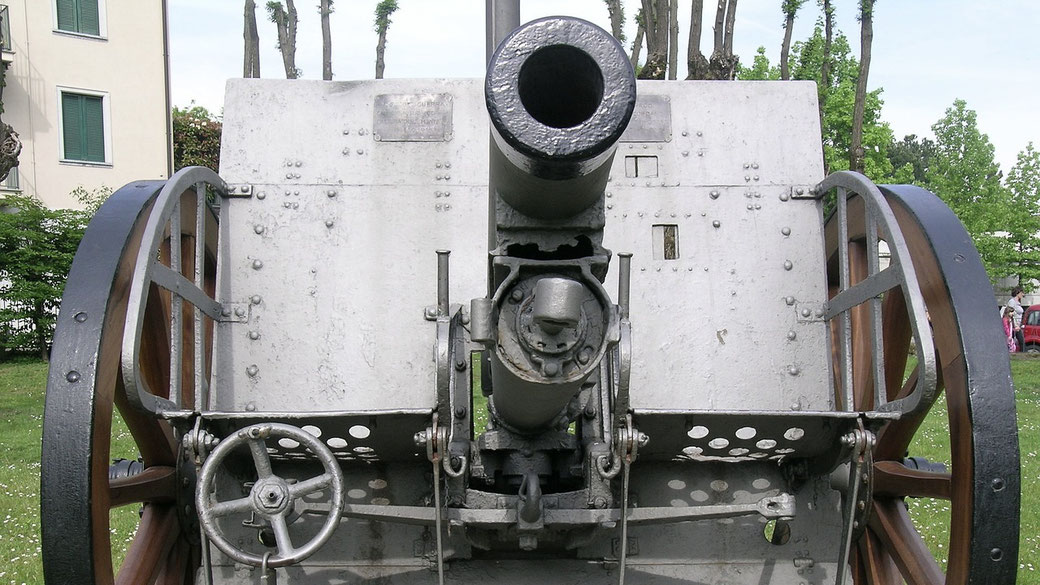How 'combined arms tactics' changed the face of warfare in WWI

World War I, also known as the Great War, saw the dramatic introduction of a vast array of new technologies such as tanks, airplanes, and machine guns.
Each of these developments transformed the nature of combat, as military strategists were forced to rethink their traditional tactics.
One of the most significant developments during this time was the emergence of a concept known as 'combined arms warfare'.
This involved the carefully coordinated integration of infantry, artillery, and tanks. this was designed to create a force that was more powerful and effective than any one unit on its own.
Combine arms warfare would ultimately become the discovery that would bring the terrible conflict to an end.
What is 'combined arms warfare'?
Combined arms warfare is a military strategy that, in World War I, involved the integration of infantry, artillery, aircraft, and tanks.
Each unit had its own distinct strengths and capabilities; however, by working together, they could complement each other's weaknesses and achieve a greater overall effect.
When used correctly, combined arms warfare was an effective way to overcome the challenges of trench warfare.
Why was it developed?
Traditional military tactics, which relied heavily on infantry and artillery, were no longer effective in the face of new technologies such as machine guns, barbed wire, and trench warfare.
These new developments made it difficult for infantry to advance and caused terribly high casualties among soldiers.
In addition, the limited mobility of artillery made it challenging to provide effective support to the infantry.
As a result, military strategists began to experiment with new tactics, which included the integration of tanks into the battlefield.
By combining the strengths of different units, military planners hoped to create a more flexible, mobile, and effective fighting force.

How it worked
In combined arms warfare in World War, the infantry provided close-range support and secured ground, while the artillery provided long-range fire support and the tanks broke through enemy lines to disrupt their defenses.
However, this coordination required careful planning and communication between different units.
The infantry was responsible for advancing across no-man's land towards the enemy trenches.
While they did this, the artillery provided a barrage of heavy fire to soften the defenses and create a clear path for the infantry.
Finally, tanks were used to support the infantry by shielding the vulnerable ground troops from rife and machinegun fire.
For their part, aircraft were used to help coordinate and direct ground forces.
Pilots would fly over the battlefield and communicate with ground troops using radios or hand signals.
This provided them with valuable information about enemy positions and movements.
As a result, this allowed ground troops to adjust their tactics in real-time, improving their effectiveness on the battlefield.
Ultimately, this strategy depended on the ability of different units to work together seamlessly and adjust their tactics in response to changing conditions on the battlefield.

When it was used to change the war
One of the earliest examples of combined arms warfare in World War I was the Battle of Cambrai in 1917.
This battle involved a surprise attack by British tanks, supported by infantry and artillery, against the German lines.
The tanks were able to break through the barbed wire and create gaps for the infantry to follow.
The attack achieved initial success and captured several kilometers of territory, but it was not well coordinated with other units and lacked adequate reserves.
Unfortunately, the Germans counterattacked and regained most of the lost ground.
German Spring Offensive
Another example of combined arms warfare in World War I was the German Spring Offensive in 1918.
This offensive was a last-ditch attempt by Germany to win the war before the arrival of American troops.
The Germans used a new tactic called infiltration or stormtrooper tactics, which involved small groups of elite soldiers armed with machine guns, grenades, and flamethrowers.
These soldiers would bypass the enemy trenches and attack the rear areas, creating confusion and disruption.
The infiltration units were supported by artillery barrages that moved ahead of them, as well as by aircraft that provided reconnaissance and ground support.
While the German Spring Offensive achieved some initial breakthroughs and pushed the Allies back, it also exhausted the German resources and morale.
Battle of Amiens
One of the most successful examples of this was the Battle of Amiens in 1918. This battle involved a surprise attack by British and French tanks, supported by Australian and Canadian infantry and aircraft.
The tanks were able to exploit the gaps in the German lines and create havoc in the rear areas.
The attack caused massive casualties and captured several kilometers of territory, as well as many prisoners and guns.
The Battle of Amiens marked the beginning of the Hundred Days Offensive, which led to the final defeat of Germany.
Its long-term significance
Combined arms warfare in World War I was a result of innovation and adaptation to the changing conditions of warfare.
It demonstrated the importance of using different types of forces and weapons in a synergistic way to achieve greater effects than any single arm could achieve alone.
It would also influence the development of military doctrine and strategy in later wars.
As a result, combined arms warfare remains a fundamental military strategy used today.
What do you need help with?
Download ready-to-use digital learning resources
Copyright © History Skills 2014-2024.
Contact via email
With the exception of links to external sites, some historical sources and extracts from specific publications, all content on this website is copyrighted by History Skills. This content may not be copied, republished or redistributed without written permission from the website creator. Please use the Contact page to obtain relevant permission.





